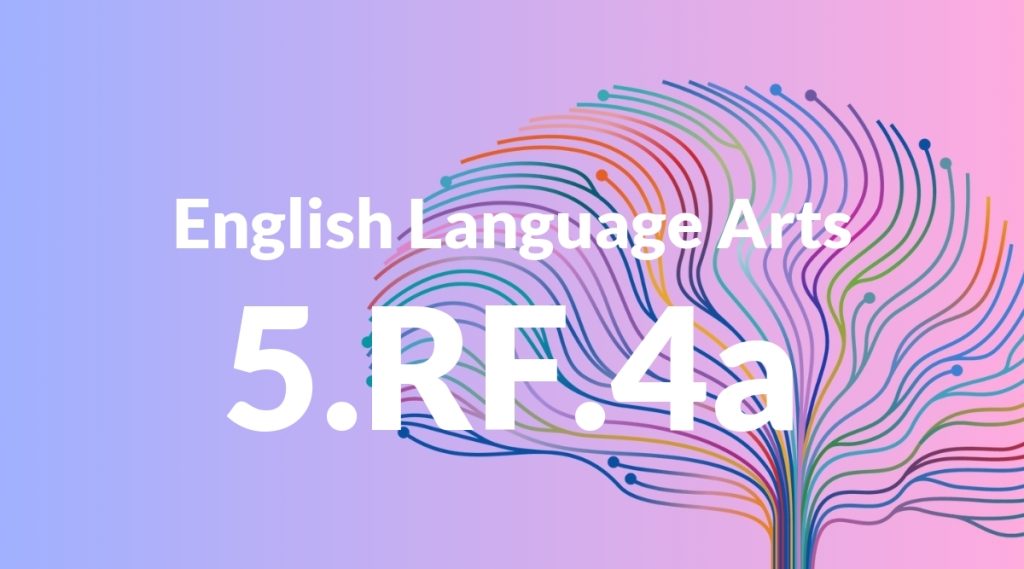Standard: 5.RF.4 – Read with sufficient accuracy and fluency to support comprehension.
Grade level: Grade 5
Subject: English Language Arts
Domain: Reading: Foundational Skills
Teacher Overview
This standard emphasizes the importance of reading with accuracy and fluency to support comprehension. It is crucial for students to develop these skills to become proficient readers who can understand and engage with a variety of texts. Mastery of this standard will help students in all subject areas and set a strong foundation for future academic success. Before tackling this standard, students should have a firm grasp of phonics, word recognition, and basic decoding skills. They should be able to read simple texts with some fluency and accuracy.
After mastering this standard, students will be able to read more complex texts with greater ease and comprehension. They will be better prepared for higher-level literacy tasks and will have a stronger foundation for academic success in all subject areas.
Common Misconception 1
A common misconception is that reading faster is more important than reading accurately. This is incorrect because reading too quickly can lead to mispronunciations and misunderstandings of the text, which can hinder comprehension.
Intervention 1
To address this misconception, provide students with short, manageable texts to practice reading accurately. Gradually increase the length and complexity of the texts as their accuracy improves, and then work on increasing their reading speed while maintaining accuracy.
Common Misconception 2
Another misconception is that reading aloud is not necessary for improving fluency. This is incorrect because reading aloud helps students practice pronunciation, pacing, and expression, which are all important components of fluency.
Intervention 2
To address this misconception, incorporate regular read-aloud sessions in class where students can practice reading aloud and receive constructive feedback. Highlight the benefits of reading aloud, such as improved pronunciation and greater engagement with the text.
Prerequisite Knowledge
Students should have a basic understanding of phonics, word recognition, and decoding skills. They should also be able to read simple sentences and paragraphs with some level of fluency and accuracy.
Subsequent Knowledge
After mastering this standard, students will be able to read more complex texts with greater ease, understand and analyze texts more deeply, and improve their overall reading comprehension skills. They will also be better prepared for more advanced literacy tasks in higher grades.
Instructional Activities
- Reading aloud in pairs or small groups.
- Using audiobooks to follow along with the text.
- Practicing timed reading exercises.
- Engaging in reading comprehension games.
- Reading different genres and discussing the content.
- Using reading fluency apps or software.
- Reading to younger students or siblings.
- Participating in reader’s theater activities.




